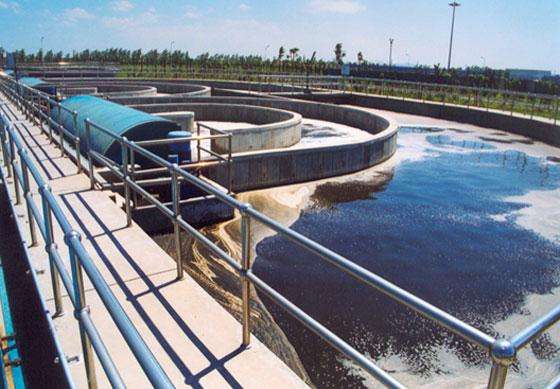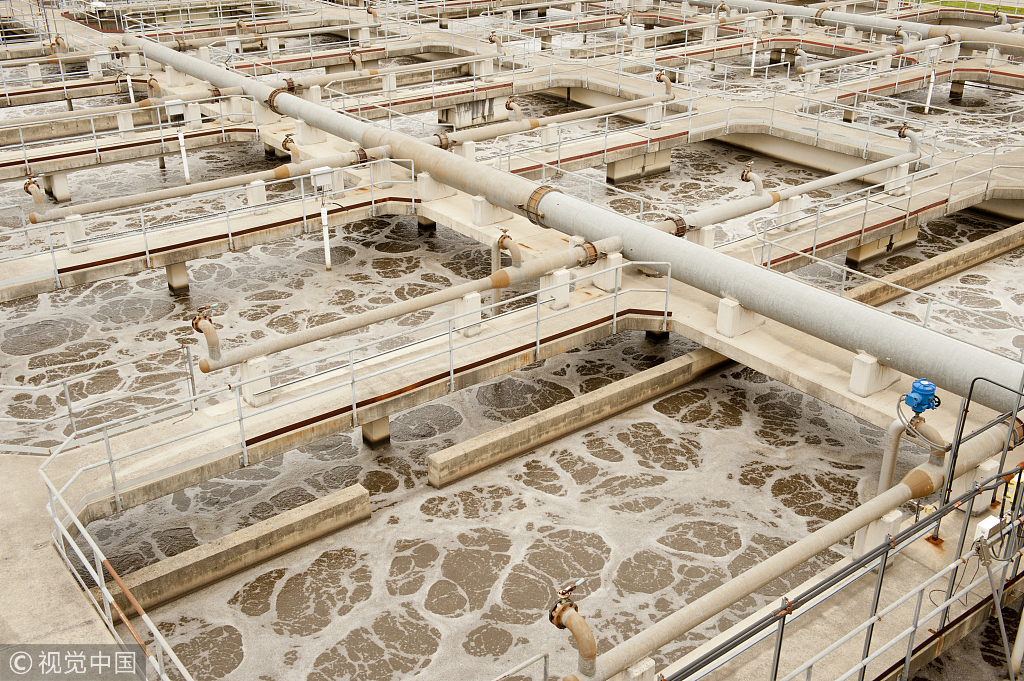Starch/starch derivative wastewater treatment
Treatment technology: The pollutants in the production wastewater of starch and its derivatives are mostly insoluble proteins, soluble proteins, inorganic salts and sugars. The concentration of such organic substances is high, the content of TN and TP is high; the main pollutant in the wastewater of fructose production is sugar. The class and a small amount of inorganic components have good solubility and relatively low total nitrogen content. In view of the above characteristics of this type of wastewater, our company usually adopts a combination of physicochemical, anaerobic biochemical, aerobic biochemical and other processes. The process has high volumetric load, short hydraulic retention time, strong impact load and low energy consumption. , low dosage, good effluent stability, etc.

Pharmaceutical wastewater treatment
Governance technology: Pharmaceutical wastewater is a highly difficult-to-treat high-concentration organic wastewater, which is characterized by complex composition, many types of organic pollutants, high concentration, high CODcr, BOD5 value and high volatility, and large difference in BOD5/CODcr value of wastewater. It has deep chroma, high toxicity, many substances that are difficult to degrade by microorganisms and microbial growth inhibitors; chemically synthesized pharmaceutical wastewater has higher salt content than COD, BOD and SS. In view of the above characteristics of this type of wastewater, our company usually adopts a combination of various methods. Pretreatment and mass separation to improve the biodegradability of each wastewater, eliminate or reduce the inhibition of toxic substances on the biochemical system, and then mix and carry out biochemical treatment. Biochemistry generally adopts a combination of anaerobic and aerobic processes. Oxidation or deep biooxidation processes.
Alcohol wastewater treatment
Governance technology: Alcohol production mainly uses corn, cassava, dried potato, etc. as raw materials. The production wastewater mainly comes from the distillation residue discharged from the bottom of the crude distillation tower when distilled and fermented, which is a high concentration organic pollution wastewater, which has a large amount of water. High temperature, high content of organic pollutants, high suspended solids, high viscosity, etc., good biodegradability, pH value is acidic. The concentration of CODcr is generally 50,000 to 60,000 mg/l, and the concentration of suspended solids is 30,000 to 50,000 mg/l. For the above characteristics of this type of wastewater, our company usually adopts sand removal, temperature regulation, total temperature high temperature anaerobic (AE anaerobic reactor), solid-liquid separation, medium temperature secondary anaerobic (IC anaerobic reactor), solid-liquid separation. A combination of aerobic treatment and the like.
Protein/fat wastewater treatment
Treatment technology: The protein/oil production wastewater is mainly whey water separated by centrifugal dewatering in the acid separation stage, followed by alkaline equipment washing water. The main pollutants in wastewater are high concentration organic matter and a small amount of inorganic components. The organic matter is mainly solid or soluble protein and polysaccharide. The ratio of BOD5/CODcr is about 0.5, pH=4.2-4.5, and the content of nitrogen and phosphorus in wastewater is partial. high. For the above characteristics of this type of wastewater, our company usually uses separation solids, acidification regulation, IC anaerobic, multi-stage A / O process. The removal rate of the anaerobic unit in the process can reach 92%-95%, and the advantage is not only that the CODcr removal rate is high, but also the water inlet does not need pH adjustment, the operation cost is low, and the biogas yield is remarkable.
Citric acid wastewater treatment
Governance technology: The production of citric acid from potato, corn and other raw materials is concentrated in the process of producing citric acid, such as concentrated sugar water, sugar washing water, washing cloth water, etc., which mainly contains a large amount of soluble organic matter (sugar, fatty acid, protein, starch, etc.). Good biodegradability, no toxic or hazardous substances. In view of the above characteristics of this type of wastewater, our company usually uses a combination of pre-conditioning, IC anaerobic, multi-stage A / O process, advanced treatment, etc. to treat this type of wastewater.
Farming slaughter wastewater treatment
Treatment technology: Slaughter wastewater comes from rim washing, slaughtering and rinsing, scalding, dissection, non-staple food processing, washing oil, etc. It has the characteristics of large discharge, uneven drainage, large amount of organic matter, ammonia nitrogen, animal and vegetable oil, and Escherichia coli. Good biodegradability. In view of the above characteristics of this type of wastewater, our company usually adopts pretreatment processes such as oil separation sedimentation tank and air flotation tank to remove suspended solids and animal and vegetable oils from wastewater, and then adopts “anaerobic (oxygen) + aerobic” biochemical treatment process. Generally, macromolecular long-chain organic matter is decomposed into small molecular organic substances such as amino acids and carbohydrates by the action of anaerobic or facultative bacteria. The aerobic treatment section can be selected from ordinary activated sludge process, SBR process, contact oxidation, A/O process, and the like.
Food processing wastewater treatment
Governance technology: The water quality of food processing wastewater is complex. The main pollution indicators are CODcr, oils, suspended solids, floating materials, etc. The content of general floating matter in wastewater is high, the content of animal and vegetable oil is obvious, the biodegradability is generally good, and the sediment content is high. Larger, the amount of water and water quality change greatly. The treatment of this type of wastewater generally includes three parts: pretreatment, biochemical treatment and post treatment. The pretreatment part mainly removes large floating objects, precipitates inorganic sediment, and removes animal and vegetable oil, including grit chambers, grease traps, grilles and other units. Biochemical treatment mainly removes organic pollutants and ammonia nitrogen in water, including A/O reaction tank, contact oxidation tank, sedimentation tank and other units. The deep treatment can be carried out by physical treatment including coagulation sedimentation, multi-media filtration and the like.
Petroleum refining wastewater treatment
Governance technology: The composition of petrochemical wastewater is very complicated. The main pollution indicators are CODcr, petroleum, sulfide, volatile phenol and ammonia nitrogen. The content of organic matter in wastewater is high, mostly toxic and harmful, and its biodegradability is poor. The amount of water and water quality (especially sulfur, ammonia nitrogen and pH) vary greatly, and the impact on the sewage treatment system often occurs. For the above characteristics of this type of wastewater, our company usually adopts three-part treatment methods of pretreatment, biochemical treatment and advanced treatment. The pretreatment part mainly removes oil, including homogeneous tanks, combined grease traps and primary and secondary air floatation tanks. Biochemical treatment mainly removes organic pollutants and ammonia nitrogen in water, including A/O reaction tank, contact oxidation tank, sedimentation tank and other units. The advanced treatment can be carried out by aerated biological filter, high efficiency filtration, biochar tower and chemical oxidation.
Chemical wastewater treatment
Governance technology: Wastewater in the chemical industry is generally high in organic matter concentration, and has toxicity and irritancy. The pH value is unstable, nutrient-rich materials are abundant, and the temperature is high. It cannot be directly biochemically treated. In view of the different characteristics of different wastewaters in the chemical industry, our company usually adopts physical, chemical, micro-electrolysis, catalytic oxidation, biochemical, and advanced treatment processes.
